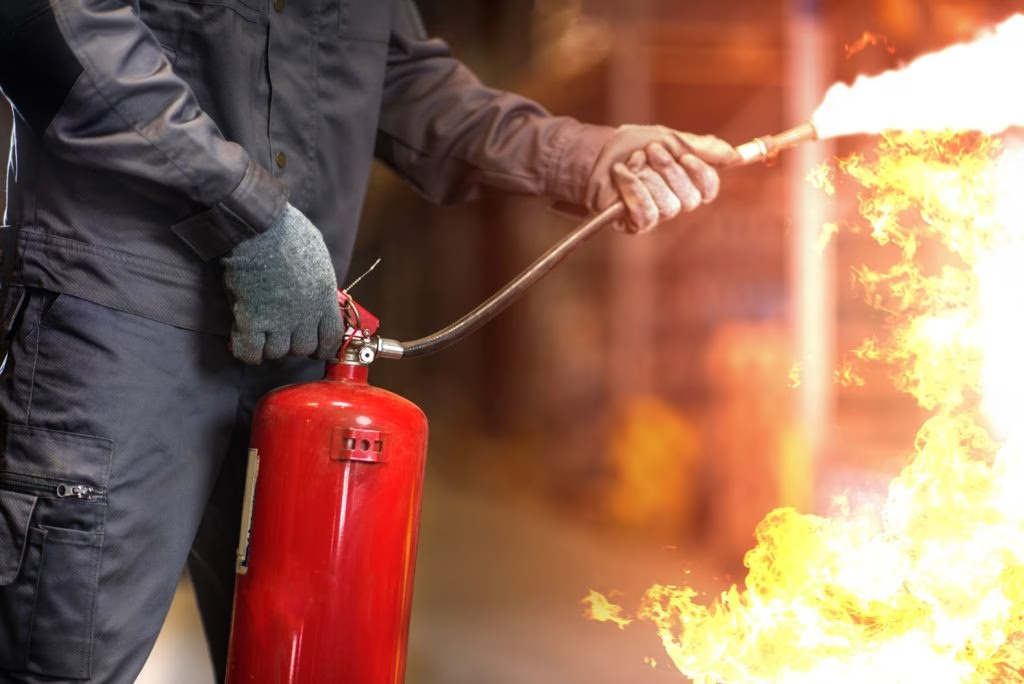Fire incidents can be devastating, causing property damage, injuries, and loss of life. Whether it’s a kitchen fire, electrical malfunction, or a rapidly spreading wildfire in Los Angeles, knowing how to prevent fires and respond effectively can make all the difference.
In this guide, we’ll cover three crucial home fire safety tips that every homeowner should implement to minimize risks and protect their loved ones.
1. Install & Maintain Fire Safety Equipment
A small flame can turn into a life-threatening fire in just 30 seconds, making early detection and suppression critical. Installing the right fire safety equipment can save lives and prevent severe damage.
Essential Fire Safety Equipment Every Home Should Have
Smoke Alarms – Install smoke detectors in every bedroom, hallway, and living area. Check batteries monthly and replace them at least once a year.
Fire Extinguishers – Keep a multi-purpose fire extinguisher in key areas such as the kitchen, garage, and bedrooms. Learn how to use it following the PASS method (Pull, Aim, Squeeze, Sweep).
Carbon Monoxide Detectors – Fire-related combustion can release deadly carbon monoxide (CO). A CO detector helps detect dangerous gas leaks.
Fire Escape Ladders – If you live in a two-story home, have retractable escape ladders in bedrooms for quick evacuation.
Sprinkler System – While not mandatory for homes, fire sprinklers can control or suppress a fire before it spreads.
Wildfire-Specific Tip for Los Angeles
Upgrade to fire-resistant materials – If you live in a wildfire-prone area, use fire-resistant roofing, siding, and decks. Install ember-resistant vents to prevent airborne embers from entering your home.
2. Create & Practice a Fire Escape Plan
Many homeowners underestimate how fast smoke and fire can spread. A well-planned escape strategy ensures that every family member knows what to do during an emergency.
How to Create an Effective Fire Escape Plan
Identify Two Exits Per Room – If fire blocks the main door, windows or secondary exits should be an option.
Establish a Safe Meeting Point – Choose a location outside your home where all family members should gather after evacuating.
Teach “Stay Low & Go” – Smoke rises, so crawling low to the ground can help avoid smoke inhalation.
Practice Fire Drills Twice a Year – Run daytime and nighttime fire drills to ensure everyone, including children and elderly family members, knows what to do.
Assign Emergency Responsibilities – If you have pets, young children, or elderly family members, assign specific tasks to ensure their safety.
Wildfire-Specific Tip for Los Angeles
Prepare a Wildfire Evacuation Kit – Pack an emergency bag with essentials like important documents, medications, food, water, and first-aid supplies in case of evacuation orders.
3. Reduce Fire Hazards Inside & Outside Your Home
One of the most effective ways to prevent fires is to remove potential hazards in and around your home.
Indoor Fire Prevention Tips
Never leave cooking unattended – Kitchen fires are a leading cause of house fires. Always stay near the stove while cooking and turn off appliances when done.
Check Electrical Wiring – Overloaded outlets and faulty wiring can spark electrical fires. Replace damaged cords and avoid using too many extension cords.
Keep flammable materials away from heat sources – Items like curtains, paper, and furniture should be kept at least three feet away from fireplaces, space heaters, and candles.
Use Caution with Space Heaters – Keep portable heaters at least three feet away from anything flammable and turn them off before leaving a room.
Don’t Smoke Indoors – Smoking materials cause thousands of home fires yearly. If you smoke, do it outside and properly dispose of cigarette butts.
Outdoor Fire Prevention Tips
Trim Trees & Clear Dry Vegetation – Wildfire embers can ignite dry plants near your home. Create defensible space by trimming trees and removing dead grass.
Store Flammable Liquids Safely – Gasoline, propane, and other flammable materials should be stored in ventilated, fire-resistant containers.
Secure Fire Pits & Grills – Keep BBQ grills, fire pits, and outdoor heaters at least 10 feet away from structures.
Inspect Your Roof & Gutters – Leaves and debris in gutters and roofs can act as fuel for airborne embers during wildfires. Clean them regularly.
Wildfire-Specific Tip for Los Angeles
Create a Defensible Space – Maintain a fire-resistant buffer zone around your property by removing dead vegetation, creating firebreaks, and planting fire-resistant plants.
Faqs
Test smoke alarms once a month and replace batteries annually. If the alarm is more than 10 years old, replace the entire unit.
A multi-purpose ABC fire extinguisher is best for home use. It can put out Class A (wood, paper), Class B (flammable liquids), and Class C (electrical) fires.
Use fire-resistant roofing, install ember-resistant vents, and clear dry vegetation from around your home. Keep emergency kits ready in case of evacuation.
Never use water! Turn off the heat, cover the pan with a lid, and use baking soda or a fire extinguisher.
Yes! Always keep candles away from flammable materials and never leave them burning unattended. Consider using flameless LED candles instead.

